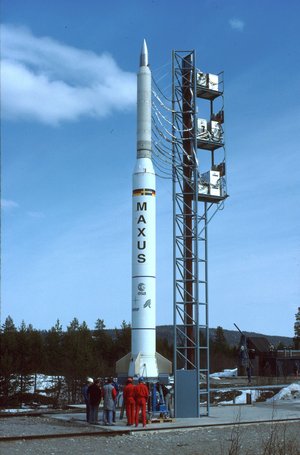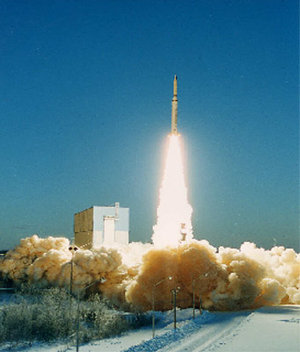Esrange and ESA
The Maxus-4 mission, like earlier flights in the Maxus series and other ESA sounding rockets, was launched from Esrange in northern Sweden. Located amid Arctic lakes and pine forests, Esrange has been in business almost as long as Europe has had any kind of space programme.
The range was originally set up in 1966 by the European Space Research Organization (ESRO) - one of the precursors of ESA. Today, it is owned and managed by the Swedish Space Corporation with ESA as a regular user and major research partner.

The Kiruna site was chosen for the three reasons estate agents always stress when they value a property: location, location and location. First, Esrange's latitude of 67 degrees and 89 minutes north puts it just within the Arctic Circle - excellent for the investigation of polar phenomena from the aurora borealis to strange noctilucent clouds and nowadays ozone depletion. Conveniently, the local microclimate is surprisingly mild by Arctic standards. Although the record winter low temperature currently stands at -48 degrees, only a few days are so awesomely chilly.
Second, it is in the heart of Europe's last great wildernesses. Sounding rockets have a safe impact area of 9000 square kilometres and unlike most rocket ranges around the globe, that area is land not sea. Payloads are very seldom lost and are usually returned to Esrange by helicopter within an hour of touchdown. This is especially important when using sounding rockets for microgravity research, because many investigators need to get their samples back in order to do detailed scientific evaluation in their home laboratories. For high-altitude balloons, another Esrange activity, the downrange land area extends over Sweden, Norway, Finland and northern Russia.

Third, despite its relative isolation Esrange is only 45 km from Kiruna and has excellent communications by road, rail and air. The site can also be breathtakingly beautiful, especially in the Arctic spring. Of course, it is not the wilderness scenery that attracts the hundreds of scientists and engineers from Europe, the USA and Japan who fly their projects from Esrange; but no one complains about the beauty, either.
The only other regular visitors are the Saami reindeer herders, traditional nomads whose animals pass through the range's impact area during migration seasons. Esrange looks after these people, too. Scattered around the impact are 19 safety bunkers and before any launch a helicopter-borne loudspeaker warns the herdsmen to take cover.






